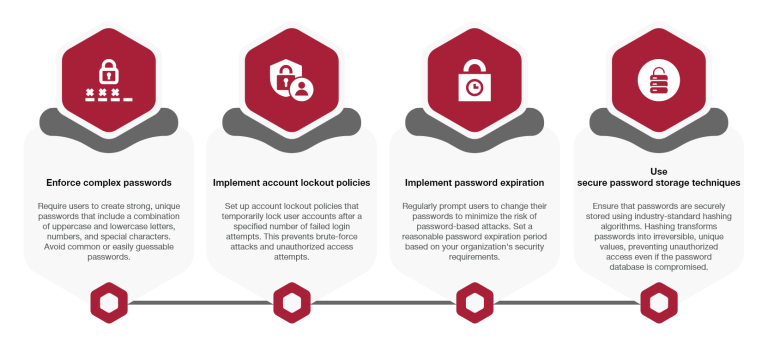

Is your organization considering moving its PeopleSoft data to the cloud? While the cloud offers numerous benefits, such as scalability and cost-effectiveness, it also introduces new security considerations. Protecting your PeopleSoft data in the cloud is essential to ensure the confidentiality, integrity, and availability of your sensitive information.
In this article, we will explore the essential security considerations you need to address when moving your PeopleSoft data to the cloud. From choosing a secure cloud provider to implementing strong access controls, data encryption, and regular security audits, we will discuss the key steps you should take to safeguard your PeopleSoft data.
By adopting a proactive approach to cloud security, you can minimize the risk of unauthorized access, data breaches, and compliance violations. Whether you are planning a full migration or a hybrid deployment, understanding the security challenges and implementing the right security measures will help you maintain the privacy and trust of your PeopleSoft data in the cloud.
Don’t let security concerns hold you back from reaping the benefits of cloud-based PeopleSoft deployment. Read on to discover how to protect your PeopleSoft data and embrace the cloud securely.
First and foremost, it provides scalability, allowing you to easily adjust your computing resources based on demand. This flexibility ensures that your PeopleSoft applications perform optimally, even during peak usage periods. Additionally, cloud-based deployment reduces infrastructure costs, eliminating the need for expensive on-premises hardware and maintenance.
By leveraging the cloud, you can enhance collaboration and accessibility. Cloud-based PeopleSoft provides a centralized platform accessible from anywhere, allowing your employees to work remotely and efficiently. This mobility increases productivity and promotes teamwork across different locations.
While the benefits of cloud-based PeopleSoft are clear, it is crucial to address the security implications that come with it. By implementing the right security measures, you can protect your PeopleSoft data and enjoy the advantages of the cloud.Talk to our experts , and plan the right strategy to move your PeopleSoft data to cloud.
When moving your PeopleSoft data to the cloud, it is essential to be aware of the potential security concerns that may arise. One common concern is the risk of unauthorized access. Without proper security controls in place, malicious actors could gain unauthorized entry to your PeopleSoft environment, compromising sensitive data and causing significant damage to your organization.
Another concern is data breaches, which can lead to the exposure of confidential information, financial loss, and reputational damage. Cloud environments are attractive targets for cybercriminals due to the large volume of data they store. Therefore, it is crucial to implement robust security measures to prevent and detect any security breaches promptly.
Compliance with industry regulations is also a major concern when migrating PeopleSoft data to the cloud. Depending on the nature of your organization and the data you handle, you may be subject to various compliance requirements, such as GDPR or HIPAA. Failure to meet these obligations can result in severe penalties and legal consequences. Therefore, it is vital to ensure that your cloud-based PeopleSoft deployment complies with relevant regulations.
To address these concerns effectively, you need to implement comprehensive security measures that protect your PeopleSoft data throughout its lifecycle in the cloud. Here is an article to read more about PeopleSoft’s Shift to the Cloud.
Data encryption is a fundamental security measure to protect your PeopleSoft data in the cloud. Encryption converts your data into an unreadable format, making it unintelligible to unauthorized individuals. By encrypting your PeopleSoft data at rest and in transit, you ensure that even if it is intercepted, it remains protected and useless to attackers.
To implement data encryption effectively, you should use industry-standard encryption algorithms and protocols. Additionally, consider utilizing encryption key management systems to securely store and manage encryption keys. By maintaining control over encryption keys, you can prevent unauthorized access to your encrypted data.
In addition to data encryption, implementing strong access controls is vital for protecting your PeopleSoft data in the cloud. Access controls ensure that only authorized individuals can access and modify your sensitive data. This includes implementing role-based access control (RBAC), which assigns specific roles and permissions to users based on their job responsibilities.
Moreover, consider implementing multi-factor authentication (MFA) to add an extra layer of security. MFA requires users to provide multiple pieces of evidence, such as a password and a unique verification code sent to their mobile device, to gain access to the PeopleSoft environment. This significantly reduces the risk of unauthorized access, even if a user’s password is compromised.
By combining data encryption and strong access controls, you can significantly enhance the security of your PeopleSoft data in the cloud.

By implementing these authentication measures, you can significantly reduce the risk of unauthorized access to your PeopleSoft environment and protect your data from potential breaches.
Data backup and disaster recovery are critical aspects of securing your PeopleSoft data in the cloud. While cloud providers offer robust infrastructure and redundancy, it is still essential to have a comprehensive backup strategy in place to mitigate the risk of data loss.
Ensure that your cloud provider offers regular, automated backups of your PeopleSoft data. These backups should be stored in a separate location to minimize the impact of any localized disaster or outage. Additionally, perform regular testing of your backup and disaster recovery processes to ensure their effectiveness and reliability.
Consider implementing a disaster recovery plan that outlines the steps to be taken in the event of a data loss or system failure. This plan should include procedures for restoring data from backups and recovering your PeopleSoft environment within an acceptable timeframe.
By prioritizing data backup and disaster recovery, you can minimize downtime and ensure the availability of your PeopleSoft data in the event of a disaster or system failure.
When moving your PeopleSoft data to the cloud, it is crucial to consider compliance requirements specific to your industry and region. Failure to comply with these regulations can result in severe penalties and damage to your organization’s reputation.
Start by identifying the relevant compliance standards and regulations that apply to your PeopleSoft data. For example, if you handle personal data of European citizens, you need to comply with the General Data Protection Regulation (GDPR). If you work in the healthcare industry, compliance with the Health Insurance Portability and Accountability Act (HIPAA) is essential.
Map out the specific requirements of each regulation and assess how your cloud-based PeopleSoft deployment aligns with them. Ensure that your cloud provider offers the necessary features and functionalities to meet these compliance requirements. This may include data encryption, access controls, audit logs, and regular security assessments.
Working closely with your cloud provider and internal compliance teams, you can ensure that your PeopleSoft data in the cloud complies with all applicable regulations, giving you peace of mind and avoiding potential legal consequences.
Selecting a secure cloud provider is paramount when moving your PeopleSoft data to the cloud. Not all cloud providers offer the same level of security, so it is essential to evaluate potential providers based on their security capabilities and certifications.
Start by assessing the cloud provider’s data security measures. Ensure that they offer robust encryption mechanisms, access controls, and regular security audits. Look for providers that comply with industry standards and hold relevant certifications, such as ISO 27001 or SOC 2.
Consider the physical security of the cloud provider’s data centers. They should have strict physical access controls, surveillance systems, and disaster recovery measures in place. Additionally, review their incident response and data breach notification procedures to understand how they handle security incidents.
Evaluate the cloud provider’s track record and reputation in the industry. Look for customer reviews and testimonials to get an idea of their performance, reliability, and commitment to security.
By conducting thorough due diligence and selecting a reputable and secure cloud provider, you can ensure the safety and integrity of your PeopleSoft data in the cloud.
To enhance the security of your PeopleSoft data in the cloud, follow these best practices:
1. Regularly update and patch your PeopleSoft applications and underlying software to address any security vulnerabilities.
2. Conduct regular security audits and penetration tests to identify and address any weaknesses in your PeopleSoft environment.
3. Monitor your PeopleSoft environment for suspicious activities and implement real-time alerts to detect any potential security breaches.
4. Train your employees on security best practices, such as recognizing phishing attempts and practicing good password hygiene.
5. Establish incident response procedures to ensure prompt and effective responses to security incidents or data breaches.
6. Stay informed about emerging security threats and trends in the cloud computing industry to proactively address potential risks.
By following these best practices, you can significantly enhance the security posture of your PeopleSoft data in the cloud and protect it from potential threats.
Compliance considerations are a significant aspect of securing your PeopleSoft data in the cloud. Let’s analyze some common compliance requirements and the solutions to address them:
1. GDPR: The GDPR requires organizations to protect the personal data of European citizens. To comply, you should ensure that your cloud provider offers data encryption, strict access controls, and the ability to respond to data subject requests promptly.
2. HIPAA: The HIPAA regulations apply to the healthcare industry and require organizations to safeguard protected health information (PHI). When moving PeopleSoft data to the cloud, ensure that your cloud provider offers HIPAA-compliant infrastructure and security controls.
3. PCI DSS: If you handle payment card data, you need to comply with the Payment Card Industry Data Security Standard (PCI DSS). Ensure that your cloud provider is PCI DSS compliant and follows the necessary security practices to protect cardholder data.
4. ISO 27001: ISO 27001 is an internationally recognized standard for information security management systems. Look for cloud providers that are ISO 27001 certified, as this demonstrates their commitment to maintaining a robust security management framework.
By understanding the specific compliance requirements and working closely with your cloud provider, you can ensure that your PeopleSoft data in the cloud meets all necessary regulations.
